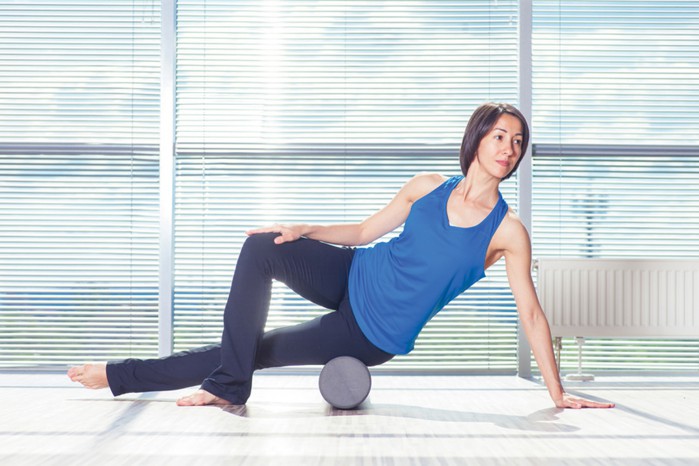Over the past decade various novel training and therapeutic practices have made an appearance, and while some had a limited lifespan, self-myo(muscle)fascial(connective tissue) release has shown some longevity. The most common form of this is foam rolling, but what does it do, does it work, and are there any safety considerations you should be aware of? – BY ERNEST HOBBES, BIOMECHANIST
The most important thing to understand is that foam rolling aims to improve flexibility, performance and relaxation, and reduce Delayed Onset of Muscle Soreness (DOMS) experienced in the days following hard training. It intends to achieve this by compression and shearing of body tissues. Apart from the physical manipulation of the muscle, this may lead to an increase in local blood flow and local temperature, and thus an increase in local metabolism, much like any warm-up would do.
There is evidence to suggest that this may cause relaxation of the muscle and neural pathways, which could actually lower performance and increase risk of injury. However, the same could be said about slow, static stretches (held for 30 seconds). Before exercise/competition, the last thing you want is slow communication between the brain and muscles, so this could be avoided by including additional elements to your warm-up, such as dynamic stretches, and Active Isolated Stretches (AIS), which would stimulate neuromuscular communication.
The Research Shows…
According to research, foam rolling has shown minimal benefit to athletes. There is no evidence to suggest that it improves athletic performance in endurance, speed or power events. Although foam rolling has been found to improve flexibility, this is temporary, often only lasting a few minutes. This may be due to a temporary reduction in the sense of pain/stretch, or a reduction in the bonds between connective tissue and muscles, but there is still no consensus in the scientific community on this. It is also difficult to determine the psychological effect foam rolling may have before competition, as it allows an athlete time to relax and focus on the task ahead.
Foam rolling is often seen as a “self-massage”, but there is far less control over the pressure applied to the tissues. In fact, the pressures often reach 10 times the highest medical compression category, and are not only applied to the muscle and connective tissue, but also to the bones, nerves, chemical- and mechanical receptors, and blood vessels. In extreme cases, studies have shown temporary interruption of blood flow and complete compression of blood vessels. Therefore, while minimal serious health risks have been reported, it is advised that athletes suffering from diabetes and osteoporosis, or at risk of venous thrombosis, etc. first consult a physician before trying foam rolling.
There is currently no conclusive evidence regarding the benefits of foam rolling, but there is also no reason to exclude it, particularly if an athlete enjoys it. Foam rolling is unlikely to be of any help if used in isolation, but may enhance your warm-up and cool-down, and foam rollers are currently available in various shapes, sizes and profiles, which may affect the experience and results.
About the Author
Ernest is a biomechanical, video, and running gait analyst at the High Performance Centre (HPC) of the University of Pretoria.


